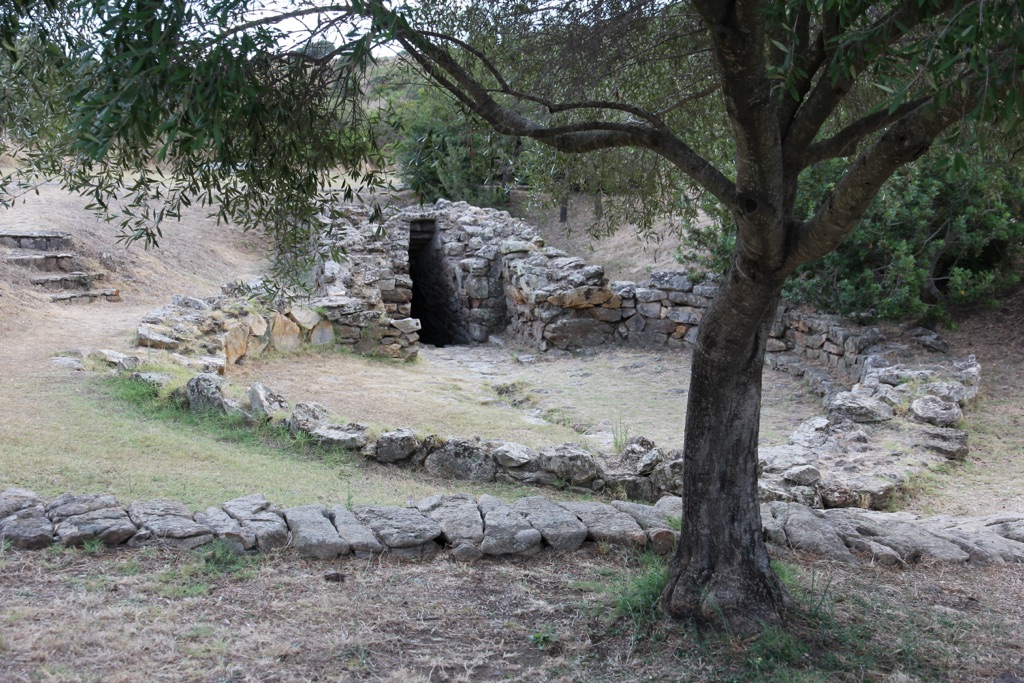Sa Testa Well is an ancient sacred well located in Sardinia, Italy. It stands as a testament to the Nuragic civilization that flourished during the Bronze Age. The well is a remarkable example of the Nuragic people’s engineering and religious practices. It is a key archaeological site that offers insights into the spiritual life of this ancient community. The well’s precise function remains a subject of debate among scholars, but it is widely believed to have been used for religious rituals involving water worship.
Get your dose of History via Email
Historical Background of Sa Testa Well Sardinia
The discovery of Sa Testa Well dates back to the 1930s. It was unearthed by Italian archaeologist Antonio Taramelli. The well is a creation of the Nuragic civilization, known for their distinctive nuraghes. These are tower-fortresses dotting the Sardinian landscape. The Nuragic people inhabited the region from the 18th century BC to the 2nd century AD. Sa Testa Well, however, did not serve as a habitation site. Instead, it was a place of worship and ritual.
The Nuragic civilization built the well, showcasing their advanced understanding of stonework. The site has not been the scene of any known historically significant events. Yet, it provides invaluable information about the Nuragic culture. The well’s design and purpose reflect the civilization’s religious beliefs and practices.
Over the centuries, the well remained untouched and preserved. It was not inhabited or repurposed by later cultures. This has allowed archaeologists to study the well in its original context. The site’s integrity offers a clear window into the Nuragic era.
Sa Testa Well’s discovery was significant for the archaeological community. It added to the understanding of Nuragic society. The well’s structure and the artifacts found within it have helped piece together aspects of Nuragic life. These include their religious ceremonies and their architectural capabilities.
While Sa Testa Well is not known for any particular historical events, its existence is crucial. It helps historians and archaeologists understand the broader Nuragic culture. The well is a silent witness to the spiritual life of an ancient people. It continues to captivate those who study and visit it.
About Sa Testa Well Sardinia
Sa Testa Well is an architectural marvel of the Nuragic civilization. It is located near Olbia, in the northeast of Sardinia. The well is part of a larger sacred complex. It includes a forecourt and an assembly area, likely used for communal gatherings.
The well itself is an underground structure, accessed by a descending stairway. The stairway leads to a tholos chamber, a circular space with a false dome. The chamber is made from precisely cut stones, fitted without mortar. This technique is a hallmark of Nuragic construction.
The well’s water basin is at the bottom of the chamber. It is fed by a natural spring, which the Nuragic people expertly harnessed. The spring’s water was likely considered sacred, given the well’s ceremonial context.
The construction materials of Sa Testa Well are local stones. These were shaped and positioned with remarkable precision. The architectural highlights include the tholos chamber and the perfectly aligned stairway. These features demonstrate the Nuragic people’s skill in stonemasonry.
The well’s design is not only functional but also aesthetically pleasing. It reflects a deep understanding of geometry and space. The builders achieved a balance between form and function, creating a space that is both sacred and architecturally sound.
Theories and Interpretations
Several theories exist about the use of Sa Testa Well. Most scholars agree that it had a religious function. The presence of water, a vital resource, suggests it was central to Nuragic spiritual life.
Some theories propose that the well was used for ritual purification. Others suggest it was a site for offerings to water deities. The exact nature of the rituals remains a mystery. Yet, the well’s design indicates that these ceremonies were significant to the Nuragic people.
The well has been the subject of various interpretations. These match its structure to historical records of Nuragic society. Unfortunately, the Nuragic people left no written records. This makes the well’s precise role difficult to pinpoint.
Dating of the site has been carried out using various methods. These include stratigraphy and radiocarbon dating. The results suggest that the well was in use during the late Bronze Age.
The mysteries surrounding Sa Testa Well continue to intrigue scholars and visitors alike. Its exact purpose may never be fully understood. However, the well remains an important piece in the puzzle of Sardinia’s ancient history.
At a glance
Country: Italy
Civilization: Nuragic Civilization
Age: Late Bronze Age, approximately 18th century BC to 2nd century AD

